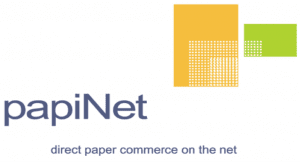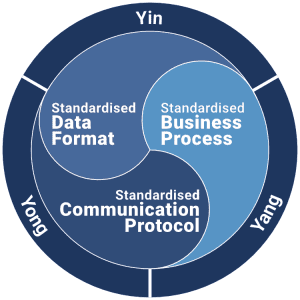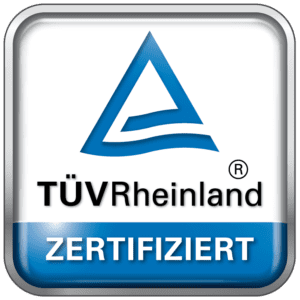Project Reference
From Theory to Reality
Using the papiNet XML Standards
A Case Study by Stora Enso North America – May 1, 2002
Read the case study here:
https://www.ponton.de/downloads/papiNet/papiNetCaseStudy_050302.pdf
papiNet
20 years of papiNet – interoperability alongside the paper supply chain
papiNet stands for the first act in PONTON’s live of B2B integration: very long ago, in the year 2000, the Euroean pulp & paper industry and their customers, large printers and publishers, complained about too much friction when exchanging data across the supply chain.
The data exchange covers al large number of document types out of which orders, order confirmations, delivery messages, call-offs, and invoives were the most popular an painful ones.
In those days, the sector lacked a common, standardised data format (EDIFACT was lousily overloaded), they also pursued vendor-specific business processes. Finally, data communication was done as in the 90es: telecommunication network operators provided the bilateral data link between a supplier and a customer. So, all-in-all, not much more gained that using a fax machine… A radically new approach was needed.
This happened with PONTON, the sector standardised the Yin-Yang-Yong:
- As data format, the recently published XML standard was used. XML Schema was not even available – that came later, in the year 2005.
- As business process, a commonly binding standard was hammered out.
- As communication protocol, the participants agreed on an own standard that was 95% close to ebXML – but ebXML was still in the build and appeared only in 2002. So, actually, it was a standard designed by PONTON, that could easily be migrated to ebXML as the latter was already within reach.
The first end-to-end breakthrough materialised in September 2000 between UPM Kymmene and Burda Publishing: an order was sent by Burda and well receivedc by UPM Kymmene – the new standard was born!
It took until end of 2000 until all paper work was done so that the result could be named papiNet 1.0. Today, the standard is far more advanced with Version 2, Release 40. But the spirit is live and kicking, even after more than 20 years.
Why was papiNet successful? Because it showed
- how standardisation drives interoperability,
- how interoperability drives automation, and
- how automation drives risk and cost reduction.
Speaking the same language reduces barriers, includes SME stakeholders (“smallholders”), streteches even across the Atlantic as also the North-American industry contributed to the development. Apropos small participants: a little, local paper importer from Hamburg who supplied to a large catalogue-based retailer installed Ponton X/P on a clerk’s PC where it ran for ages. And exchanged data with all the large suppliers from the nordic countries as the large players did – good old days!
And speaking about Ponton X/P: with papiNet, the first case of a sector-wide license was born. PONTON developed the software, transfered all usage rights for data exchange to all stakehoders where “papiNet” was spoken. This way, coherence, interoperability, and support out of one hand was give to a diverse and growing business community.
We are looking forward for the next 20 years of papiNet, interoperability and Ponton X/P!










